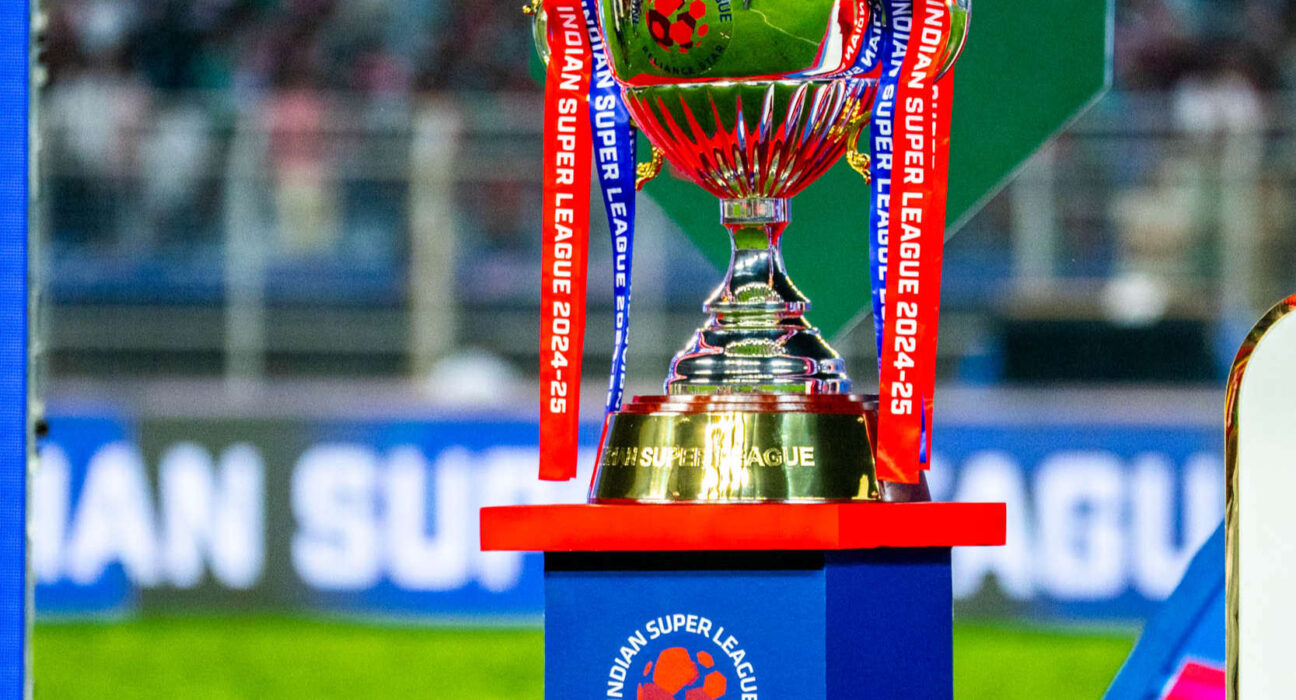The Indian Super League faces an unprecedented crisis as we’ve learned that not a single bid was received for the commercial rights tender process that concluded on November 7, 2025. Despite a lengthy and highly publicized bidding process that engaged four potential bidders in discussions, the All India Football Federation (AIFF) failed to attract any formal proposals.
Unfortunately, the Kalyan Chaubey-led AIFF launched this tender on October 16 to find a new commercial partner who would manage broadcasting, sponsorship, digital, and merchandising rights. When examining Indian Super League stats and requirements, we can see the federation demanded a substantial minimum guarantee of ₹37.5 crore per year or 5% of gross revenue for a 15-year period, whichever was higher. Additionally, only companies with a minimum net worth of ₹250 crore were eligible to participate. Consequently, this development comes at a critical juncture as the current Master Rights Agreement with Football Sports Development Limited (FSDL) is scheduled to expire on December 8, 2025.
AIFF Convenes Emergency Meeting After Tender Collapse
Following the tender collapse, the AIFF Bid Evaluation Committee has scheduled an emergency meeting over the weekend to address the crisis facing the Indian Super League. Headed by former Supreme Court Justice L.N. Rao, with AIFF President Kalyan Chaubey as a member, the committee must now chart a path forward as the federation’s top-tier football competition faces uncertainty.
Furthermore, Mr. Kesvaran Murugasu from the Asian Football Confederation will join as an independent member to provide additional oversight. This emergency session comes at a critical juncture, with the existing contract with Football Sports Development Limited set to expire this December.
The meeting’s agenda will undoubtedly focus on alternatives after the federation’s failure to attract bidders willing to accept the annual asking price of ₹37.5 crore. Notably, the original tender was issued following a September 1 Supreme Court directive that ordered the AIFF to conduct an open, competitive process for selecting a commercial partner.
In fact, the entire bid process remains under Supreme Court supervision, adding additional pressure on the committee to develop viable solutions. The federation must now reconsider its approach to financing the tournament and associated functions like production, marketing, and broadcasting rights that were included in the tender specifications. Meanwhile, indian super league stats show the competition’s commercial framework remains in limbo.
Why Did All Potential Bidders Back Out?
Initially, four entities expressed interest in the Indian Super League tender: FSDL, FanCode, Conscient Heritage Group, and a foreign consortium. However, after examining the details, none of these parties submitted a formal bid by the November 5 deadline.
The primary deterrent was the financial framework. Potential investors balked at the AIFF’s requirement of Rs 37.5 crore annually or 5% of gross revenue, whichever was higher, for a 15-year commitment. Moreover, bidders needed to maintain a minimum net worth of Rs 250 crore at the end of the 2024-25 financial year.
Several operational burdens also discouraged participation. The bidder would be responsible for production costs, prize money, VAR expenses, grassroots activities, and overseeing the league’s commercial rights. Essentially, the AIFF sought to retain control through a governing council structure while pushing financial risks to its commercial partner.
One potential bidder was eliminated due to a conflict of interest according to tender rules. For FSDL specifically, the introduction of promotion and relegation undermined the closed franchise model that previously provided revenue stability.
The bidding process also required substantial financial commitments upfront, including a Rs 10 lakh bid security and a bank guarantee worth three times the first year’s commitment. Ultimately, as one industry executive noted, “The financials did not work out” as the AIFF’s model was widely considered “completely unsustainable”.
What Does This Mean for the Future of Indian Super League?
The tender failure represents a critical juncture for the Indian Super League, exposing fundamental issues beyond the immediate contracting crisis. Financial viability remains the core challenge, with the Indian Super League ecosystem reportedly suffering cumulative losses exceeding Rs 5,000 crore over the past 15 years. This figure includes approximately Rs 3,000 crore in losses from clubs and marketing partners, plus an additional Rs 2,000 crore in broadcasting and production costs.
These financial struggles appear throughout the league’s operations. The average Indian Super League club loses between Rs 30-35 crore annually, with club wage-to-turnover ratios sometimes exceeding 70%, well above the global best practice of 60%. Attendance figures have plummeted from 25,408 in the inaugural season to just 11,084 in recent campaigns, while television viewership has collapsed from 429 million in 2014 to approximately 130 million last season.
Given these points, the current governance model seems unsustainable. Unlike successful international leagues such as the English Premier League, which operates as a private company with clubs as shareholders, the Indian Super League structure concentrates control with the federation while pushing financial risk to commercial partners and clubs.
The immediate impact is already visible, with Bengaluru FC, Chennaiyin FC, and Odisha FC suspending operations or player salaries. Ultimately, the crisis threatens the entire ecosystem—affecting approximately 5,000 players, coaches, staff and others involved with the league, potentially derailing Indian football’s development for years to come.
Conclusion
The failed tender process marks a pivotal moment for Indian football, exposing deep-rooted issues within the Indian Super League’s foundation. Undoubtedly, the AIFF’s demanding financial requirements – particularly the ₹37.5 crore annual guarantee alongside operational burdens – proved too steep for potential bidders. This rejection stems not merely from excessive financial demands but rather from fundamental flaws in the league’s business model.
Consequently, clubs face immediate existential threats. Teams like Bengaluru FC, Chennaiyin FC, and Odisha FC have already begun suspending operations or halting player salaries. The impact extends far beyond these individual clubs, however, threatening approximately 5,000 players, coaches, and staff who depend on the league for their livelihoods.
Most concerning remains the stark contrast between ISL’s governance structure and successful global models. Unlike the English Premier League, which operates with clubs as shareholders, the Indian Super League concentrates control with the federation while shifting financial risks to commercial partners and clubs. This arrangement has contributed to staggering losses exceeding ₹5,000 crore over 15 years.
The evidence of decline appears everywhere – attendance figures dropped from 25,408 to 11,084, television viewership plummeted from 429 million to approximately 130 million, and clubs routinely operate with unsustainable financial metrics. These statistics reflect not temporary setbacks but systemic failures.
The emergency meeting called by the AIFF Bid Evaluation Committee therefore stands as a critical juncture. Without significant structural reform addressing governance, financial sustainability, and commercial viability, the progress made in Indian football over the past decade risks complete collapse. The future of Indian football hangs in the balance, dependent on whether leadership can acknowledge these fundamental issues and implement meaningful changes before irreversible damage occurs.
Key Takeaways
The Indian Super League faces an existential crisis that exposes fundamental flaws in Indian football’s commercial structure and governance model.
- Zero bids received: Despite four interested parties, no formal proposals were submitted for ISL’s ₹37.5 crore annual commercial rights tender, forcing an emergency AIFF meeting.
- Unsustainable financial model: The league has accumulated over ₹5,000 crore in losses over 15 years, with clubs losing ₹30-35 crore annually and unsustainable operational metrics.
- Immediate operational crisis: Multiple clubs including Bengaluru FC and Chennaiyin FC have suspended operations, threatening 5,000 jobs across players, coaches, and staff.
- Structural governance issues: Unlike successful leagues where clubs are shareholders, ISL concentrates control with AIFF while pushing financial risks to commercial partners.
- Declining fan engagement: Attendance dropped from 25,408 to 11,084 per match, while TV viewership collapsed from 429 million to 130 million viewers.
The crisis demands immediate structural reforms addressing governance, financial sustainability, and commercial viability, or Indian football risks losing a decade of progress and infrastructure development.
Read more about Indian Football





